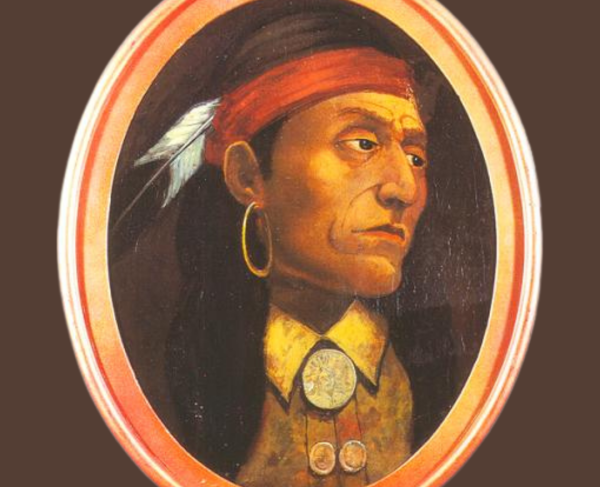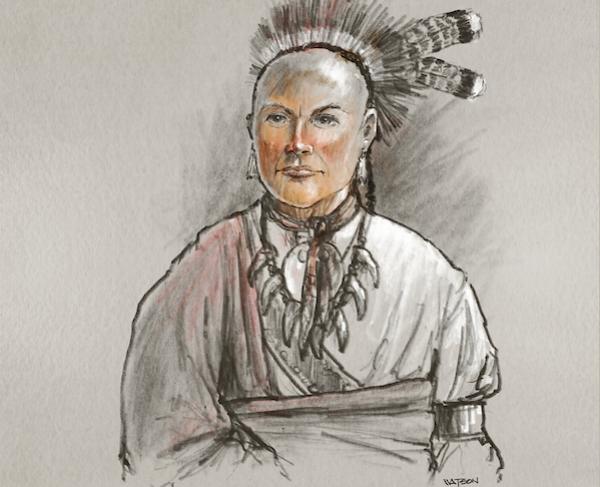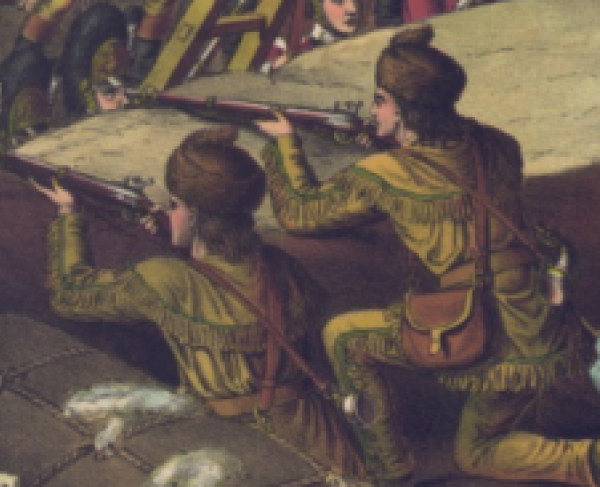Pontiac

Though his origins are shrouded by mystery due to little documentation, the Ottawa chief Pontiac became one of the most romanticized Native American figures of the late 18th century. Born sometime between 1715 and 1725, Pontiac first appears in the historical record in 1747 as an ally of France against the Huron tribe. France’s colonial strategy in North America involved forging alliances with various native groups to maintain control of the fur trade, while the various tribes competed with each other over the position of primary partner. When the Huron’s allegiance began to waver between France and their own traditional rival England, the Ottawa and their new war leader Pontiac were only too happy to take care of the problem for their colonial patrons. Pontiac and the Ottawa continued to support France during the French and Indian War (1754-1763), and during the conflict, a British major named Robert Rogers claimed to have met the warrior during the siege of the French fort at Detroit. Rogers later became an unofficial promoter for Pontiac and is one of the men responsible for his legend.
Following the end of the French and Indian War, and the British conquest of France’s North American territories, much of the British policy towards Native Americans was decided by General Jeffrey Amherst, the man who captured Montreal during the war. Amherst abandoned the French policies of gift-giving that many Native Americans were used to, and Amherst refused to treat France’s former allies as the autonomous entities that they considered themselves. British colonists also began entering these territories in larger numbers than the French ever did. These changes provoked a traditionalist religious revival among the Indians that acted as a kind of call to arms. Pontiac was among those who responded and played a central role in the many inter-tribal councils that eventually led to war.
Despite hearing reports of Indian discontentment as early as 1761, Amherst continued with his hardline policies, constructing several forts in the Great Lakes region in violation of earlier treaties. Violence finally erupted two years later as Pontiac led his fellow Ottawa and laid siege to Fort Detroit. That same summer, his allies in the Ohio Country also laid siege to Fort Pitt, but this was ultimately unsuccessful, and is mostly notable for how the British infamously tried to present gifts infected with smallpox to their enemies. Though the plan was not particularly effective, it remains a striking example of early modern biological warfare. On July 31st, 1763, the British attempted to break the siege, but Pontiac defeated them at the Battle of Bloody Run. The siege of Fort Detroit ended in failure, however, and Pontiac retreated into Illinois Country, where his role transitioned from leading his warriors into battle to maintaining his loose coalition against the British. In this, he was successful, and rebellion continued out across the Illinois and Ohio Country as well. Despite maintaining military dominance, British occupation of the rebellious territories failed to stem the tide of low-level violence, and so in 1766, Superintendent of Indian Affairs Sir William Johnson met with Pontiac to end the hostilities. In exchange for peace, the British pledged to adopt some of France’s old policies when dealing with Native American tribes and promised to halt further settlement of the area, as coincidentally, the Royal Proclamation of 1763 formally banned any further colonization west of the Appalachian Mountains.
As with his early life, Pontiac’s life after the war is poorly documented. The only major event appears to have been an investigation into his role in the death of an English child during the Siege of Fort Detroit which ended inconclusively for lack of evidence. It is also clear that Pontiac lost much of his influence as peace returned, showing that his skills in wartime statesmanship were no longer needed. Pushed to the margins of society even by his own tribe, Pontiac lived the rest of his days in the French-speaking town of Cahokia, Illinois, where an anonymous warrior from the Peoria tribe assassinated him in what was likely a personal dispute.
Pontiac was far from the only Native American leader in the war that bears his name, but his early successes, including his highly visible role as a diplomat, did cause the British to look to him as the central figure of the conflict. In addition, Robert Rogers, the British soldier he met during the French and Indian War, composed a short play about the warrior called Ponteach: or the Savages of America, which undoubtedly added to his legend. He has also lent his names a number of towns in both the United States and Canada. Most famously, the story of Pontiac inspired an automobile brand name for the General Motors company, which is based in Detroit.


